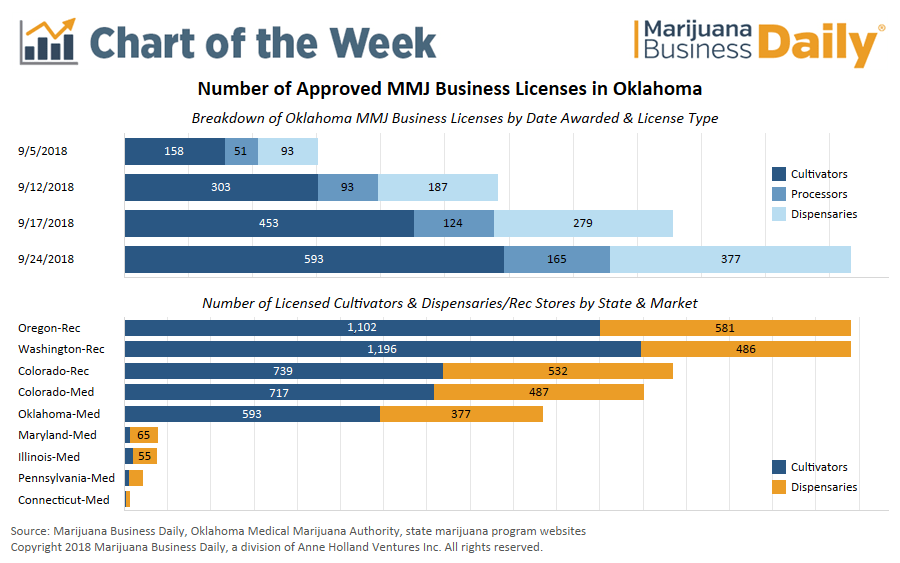Oklahoma’s medical marijuana industry is shaping up to be one of the most unique MMJ markets in the nation, with a large number of players vying for attention.
Just three months after voters approved State Question 788 – a ballot initiative legalizing medical marijuana in Oklahoma – regulators have awarded more than 1,100 business licenses throughout the state.
The large number of licensees in a state with roughly 4 million residents raises questions about how profitable the new businesses ultimately will be.
“Oklahoma did medical marijuana like we started our state,” said Joe Norwood, an attorney at Norwood Law Firm in Tulsa. “Everyone just lined up, the starting gun was shot off, and people went and started staking their claims. I guess that’s how we like it here in the Sooner State.”
Officials in Oklahoma will award additional licenses in the coming days and weeks. The Oklahoma Medical Marijuana Authority – the agency overseeing MMJ in the state – has indicated that nearly 500 applications remain in the pipeline.
The speed and scale at which Oklahoma’s program has unfolded was by design.
Under State Question 788:
- There are no caps on the number of MMJ business licenses that can be awarded.
- Doctors are allowed to recommend the product for any condition they see fit.
- Municipalities are prohibited from enacting zoning restrictions to prevent dispensaries from opening.
Furthermore, the initiative required the state to make MMJ business license applications available just 30 days after the measure passed – a much quicker timeline relative to other states that have legalized medical or recreational cannabis.
“State Question 788 is pretty clear that it doesn’t want barriers to entry. It doesn’t want to keep people out,” Norwood said. “It wants people that want to participate in the industry to be able to do so.
“If you’re of age, an Oklahoma resident, you’re not a felon, you’ve got the $2,500 licensing fee and an address where you’re going to be conducting business, you’re getting a license.”
While it’s unclear how many licensees will go on to actually open their doors and conduct business in the state, the launch of Oklahoma’s MMJ market will be without parallel if even a fraction gets off the ground.
It also remains to be seen, however, how businesses will fare given such unrestricted access to the market.
The wholesale price per pound of MMJ will almost certainly face strong, downward pressure due to the number of licensed cultivators in Oklahoma, which may come much more quickly relative to states where the number of licensed growers increased gradually over time.
Retailers also could face significant hurdles attracting patients while retaining healthy margins, as price consciousness will lead to many low-cost dispensaries.
Furthermore, finding physicians willing to participate could prove challenging for some prospective patients. At least two major health care providers in the state – Saint Francis Health System and Oklahoma State University Medical Center – have said their doctors will not be allowed to recommend MMJ.
Despite that limitation, the Oklahoma Department of Health expects to register up to 80,000 patients in the program’s first year. That equates to just more than 2% of the state’s total population, a mark typically reached by successful MMJ programs – such as Arizona or New Mexico – several years after launch.
Easy access to dispensaries may serve to boost program awareness and enrollment in Oklahoma, which will be needed if the state is to support such an extensive MMJ industry.
Eli McVey can be reached at elim@mjbizdaily.com





